21 December, 2002
Snow School
The Field Safety Training Program affectionately known as "Happy Camper
School" is designed with safety and survival in mind. Our three outstanding
instructors take our class of about 16 students through a series of
classroom presentations and demonstrations before taking us out to a camp
located on the ice about 45 minutes from McMurdo. I should mention that the
course is two days long and that I'm posting this journal on just one day in
order to discuss the program all at once. We have presentations on the
contents and use of equipment in the survival bags that we'll have with us
in the Dry Valleys, radio usage, helicopter operations and safety,
hypothermia first aid, and others.
The weather in the field is windy and cold. The visibility is usually poor
because of the blowing snow. Snow blindness and frostbite pose serious
threats but the equipment we have is very good if it's used properly. We
are dressed in layers to stay warm. We also wear the fashionable bunny
boots which do a great job of keeping our feet warm. In fact, I have yet to
have cold feet here. It's amazing to think of what the explorers of 100
years ago had to contend with. No polypropylene, no polar fleece. Those
were some tough folks.
In our field camp we set up two Scott tents (large, strong, pyramidal shaped
yellow tents) and four mountain tents. There is enough room in the Scott
tents for four people each plus two in each of the mountain tents. We are
given the option of constructing our own shelters out of the ice and snow if
we like and are taught how to cut large blocks of snow with long saws. The
snow is very cold and is very crunchy. It doesn't pack well to make a
snowman or have snowball fights but it can be cut like Styrofoam (it's a lot
heavier though) and can be used to make a snow wall or igloo. We build snow
walls near the tents about four feet high to prevent the blowing snow from
drifting onto the tents. We also drink a lot of water. It is incredibly
dry and constructing walls and setting up tents can make you sweat. We also
lose water simply by breathing. Every exhaled breath contains heated
moisture. I thought it would be hard to be drinking four quarts of water a
day but it isn't. Your body really needs it. Mr. Foss could tell you about
how much water and fruit he eats and drinks while running marathons. It's
weird but your body needs the liquid.
Each of the five people on our team decides to not use the tents - we'll
sleep in snow shelters we either build or scrounge from what appears to be
the remnants of a previous snow school. Taber and I start looking around at
some of the structure left from before but they worn away or incomplete.
Looks like we'll be cutting a lot of snow blocks. Somehow in the blowing
snow we see what appears to be the faint outline of an igloo so we decide to
check it out. Well it turns out to be a big pile of snow. But not so fast.
We take turns digging away with our shovels at the down wind side and before
long the shovel blade just goes right in. The pile of snow is hollow! We
can't believe our luck! It's as if we had just punched through a wall in
King Tut's tomb. Inside is some drifted snow that is easily removed and we
find there is ample room for the two of us with our gear. What's even
better is that the thick snow walls are great insulators from the sound.
Inside is dead silence. You can't hear the howling wind, flapping tents,
and flags if you wanted to. Sarah, Amanda, and Karina are also working on
trying to salvage a snow structure which they do for the night.
We have quite an assortment of freeze-dried foods. In the Scott tents there
are pots of water heated for the dinners. Taber and I tried the chicken and
rice that I thought was pretty good. We also have some granola bars and
chocolate. After dinner we talk a lot and Taber even does some cross
country skiing.
The next morning comes and the skies have cleared, the winds have died down
and we can see the mountains along the coast. After breaking down and
storing the tents and other equipment we move to the huts the instructors
spent the night in to talk about more survival techniques and safety. We
divide into two teams of eight people each and our group simulates an
airplane crash where we've gone down in the middle of nowhere with the
survival bag and radio. We set up a mountain tent, build a snow wall, get
some water heated, and set up the antenna and HF radio to make a call to
McMurdo operations.
Hopefully we won't need to use the emergency procedures we've learned.
Antarctica is beautiful but can be a very unforgiving place.
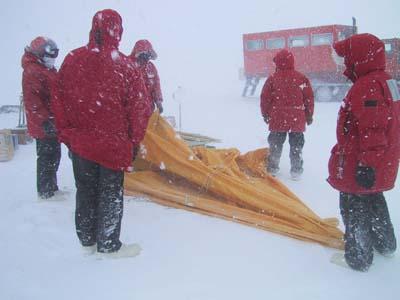
1. Setting up the Scott tents
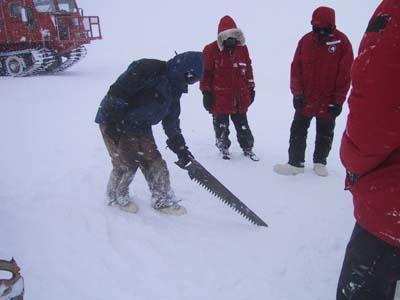
2. Cutting snow blocks to build walls and snow shelters
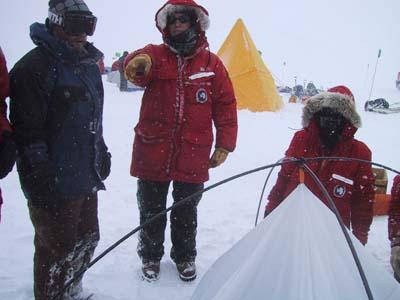
3. Karina discusses how to set up the mountain tents
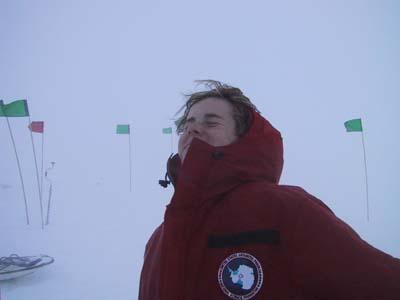
4. Sarah enjoys the pristine air
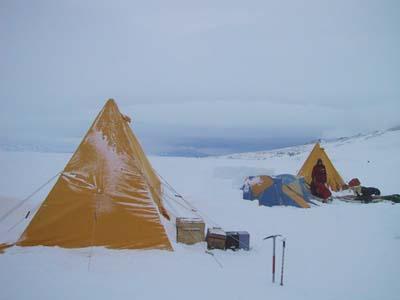
5. The field camp
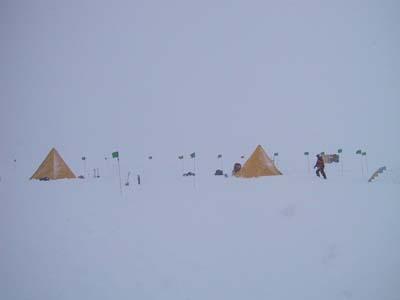
6. Flags mark some of the boundaries around the field camp
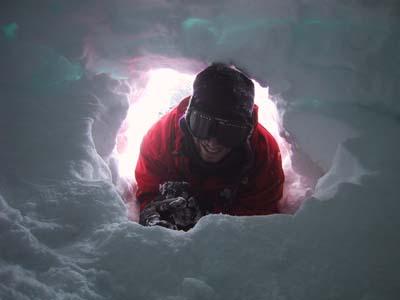
7. Taber enters the igloo
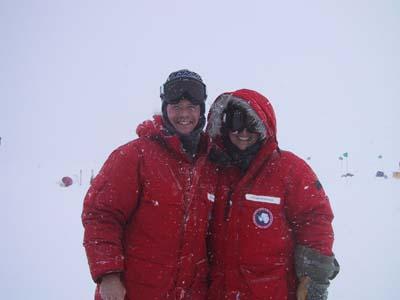
8. Me with Louise Huffman another TEA who will be in the Dry Valleys on a separate research team
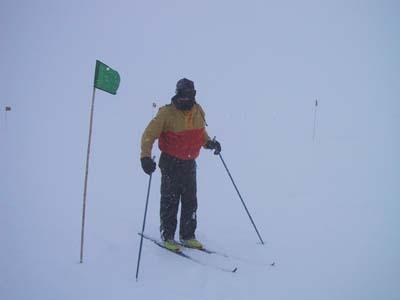
9. Taber does some cross country skiing in Antarctica
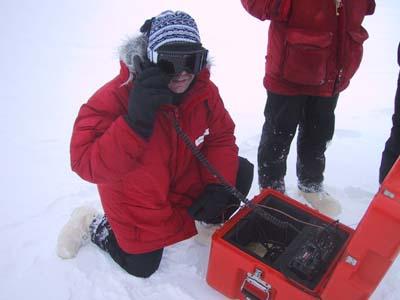
10. Doing a radio check with MAC OPS (McMurdo Operations)
Contact the TEA in the field at
.
If you cannot connect through your browser, copy the
TEA's e-mail address in the "To:" line of
your favorite e-mail package.
|
